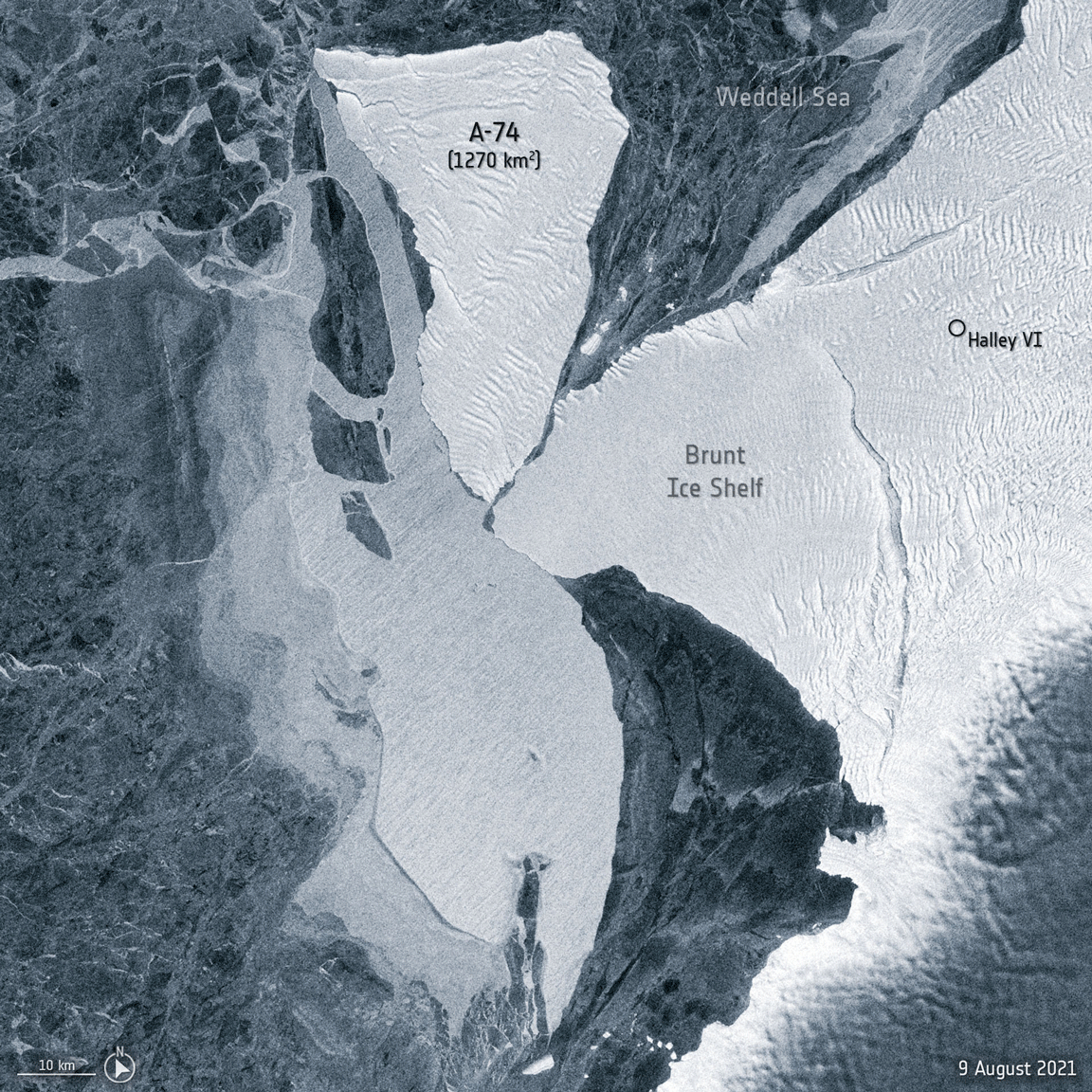Iceberg A-74, approximately 1.5 times the size of Greater Paris, calved from Antarctica’s Brunt Ice Shelf earlier this year. Over the last six months, it has remained close to the shelf it broke away from owing largely to ocean currents. In early August, strong easterly winds have spun the iceberg around the western tip of Brunt, brushing slightly against the ice shelf before continuing southwards. Radar images, captured by the Copernicus Sentinel-1 mission, show the movement of the 1270 sq km berg from 9 until 18 August.
For years, glaciologists have been monitoring the formation and extension of the fractures, known as rifts, and the opening of large chasms in the 150 m thick Brunt Ice Shelf. Chasm 1, the large crack running northwards from the southernmost part of Brunt, is narrowly separated from the more recent Halloween crack.
Had the drifting iceberg hit the unstable ice shelf with severe force, it may have triggered the release of a new 1700 sq km-sized iceberg. Despite reports of a minor impact, the prospective berg remains tenuously attached in the vicinity of McDonald Ice Rumples, where the ice shelf is locally grounded on the seabed.
ESA’s Mark Drinkwater comments, “The nose-shaped piece of the ice shelf, which is even larger than A-74 remains connected to the Brunt Ice Shelf, but barely. If the berg had collided more violently with this piece, it could have accelerated the fracture of the remaining ice bridge, causing it to break away. We will continue to routinely monitor the situation using Sentinel satellite imagery.”
During the dark winter months in Antarctica, radar images are indispensable because, apart from the region being in a remote region, radar continues to deliver images regardless of the weather or seasonal darkness. The Copernicus Sentinel-1 mission returns images regardless of whether it is day or night, also allowing for continuous imaging during what is now Antarctic mid-winter.
With the ice shelf deemed unsafe due to the encroaching cracks in 2017, the British Antarctic Survey closed their Halley VI Research Station and re-positioned it to a more secure location, around 20 km away from Chasm 1. Halley is made up of eight interlinked pods built on skis which allows the pods to be easily moved in case of unstable ice or new chasms forming on the ice shelf.



 Image:
New radar images show the A-74 iceberg spinning around the western tip of the Brunt Ice Shelf, brushing slightly against it before continuing southwards.
Image:
New radar images show the A-74 iceberg spinning around the western tip of the Brunt Ice Shelf, brushing slightly against it before continuing southwards.